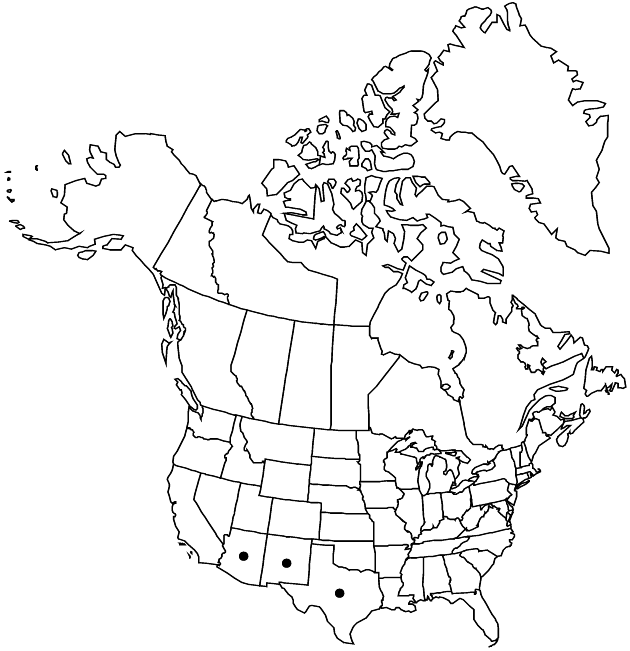Senecio parryi
in W. H. Emory, Rep. U.S. Mex. Bound. 2(1): 103. 1859.
Perennials (annuals?), 30–60 (–100) cm (apparently taprooted). Herbage viscid-pubescent (reputedly notably odorous). Stems single (sometimes branching). Leaves evenly distributed (basal and proximal sometimes withering before flowering); weakly petiolate; blades ovate or obovate to suborbiculate, spatulate, or lanceolate, 8–12 × 2–4 cm, bases tapered to truncate, margins dentate (mid and distal leaves similar, triangular-lanceolate, bases truncate, clasping). Heads 12–30 in corymbiform arrays. Calyculi of 5–15+ lanceolate or linear to subulate bractlets (lengths 1/3–7/8+ phyllaries). Phyllaries ± 21, 6–7 mm, tips greenish. Ray-florets ± 13; corolla laminae 8–10 (–12+) mm. Cypselae hairy.
Phenology: Flowering late summer–fall.
Habitat: Rocky, disturbed sites in desert mountains
Elevation: 1300–2300 m
Distribution

Ariz., N.Mex., Tex., Mexico
Discussion
Senecio parryi is infrequently collected and poorly known. In the flora, it is known from trans-Pecos Texas westward to southern Arizona.
Selected References
None.